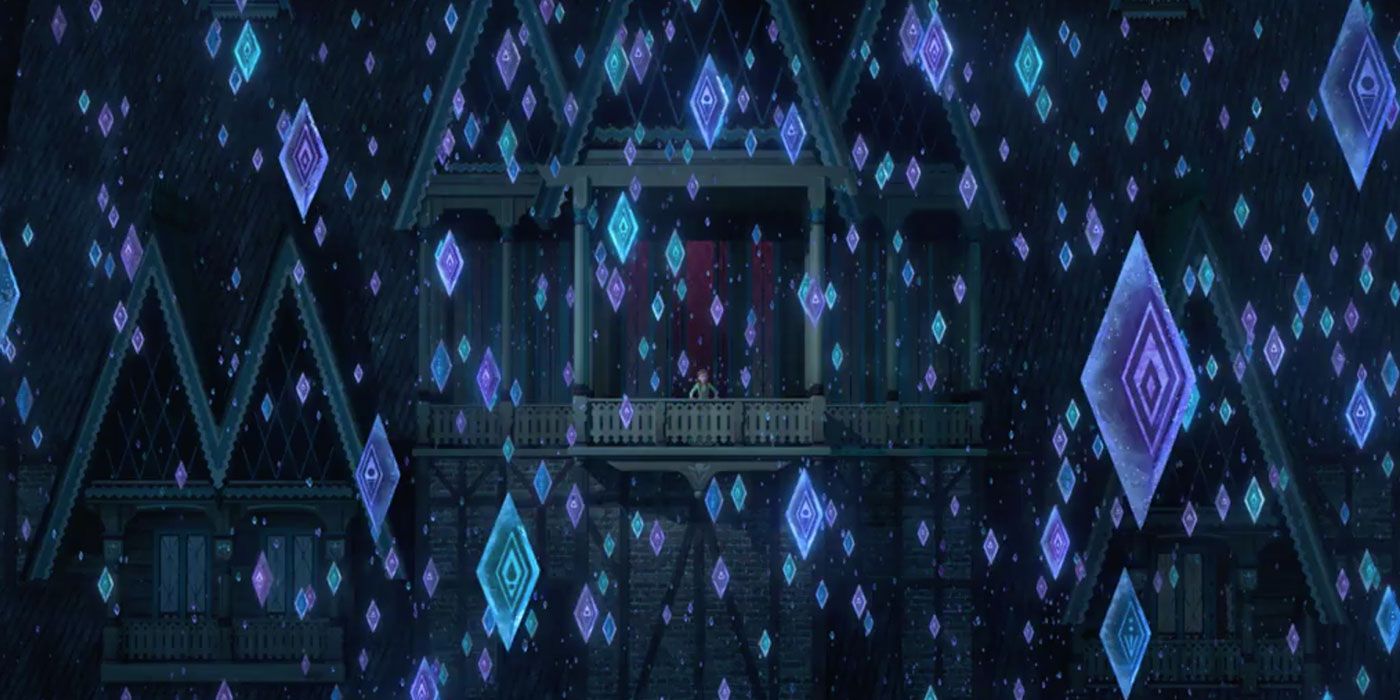In Frozen 2, Elsa heeds the call of a mysterious, disembodied voice – the melody of which takes inspiration from some real-world musical traditions. The immensely successful first Frozen film revolved around Elsa and her sister Anna coming to terms with her elemental powers and protecting their Kingdom from threats both obvious and obscured. In the sequel, the two sisters and their friends travel north seeking answers, not knowing that they will be forced to reckon with the deeds of their ancestors.
Although Elsa’s powers are a driving force of the plot in the first film, it is only in Frozen 2 that their origins are investigated, albeit unintentionally. At first, the voice that calls to Elsa in “Into the Unknown” seems to promise answers to the natural disasters plaguing Arendelle, but as she and the party embark on their quest, they find that these answers are wrapped up in the magical forces of the land that she channels. An entirely sung role performed by Norwegian art-pop artist AURORA, the Voice is ultimately revealed to be the echo of Elsa’s mother, calling to her across time and space through a cryptic melody.
The four notes that compose the entirety of the Voice’s “lines” are drawn from the dies irae, a 13th century Catholic hymn that has been consistently referenced in music both religious and secular since its creation. The lyrics, originally written in Latin, concern the Last Judgment, leading to the song’s common use in funereal Requiems. As such, its appearances in pop culture tend to be more ominous than energizing (e.g., The Shining, Poltergeist, and Sweeney Todd), but this ironic usage perhaps foreshadows the iconoclastic information that Elsa, Anna, and company uncover by following it.

This lofty, orthodox inspiration is counterbalanced by another source that hews closer to the Nordic-flavored setting of Frozen. In speaking with The New York Times, Robert Lopez confirmed that the delivery of the Voice’s refrain is meant to pay homage to kulning, a style of Scandinavian singing used to shepherd livestock from long distances. Like the dies irae, kulning is centuries old, but its musical tradition is much more pastoral, having no known religious significance. Additionally, in keeping with the sisterly focus of the films, kulning is specifically associated with female singers in its historical usage.
Despite being an (effectively) unseen character in a very visually striking movie, the Voice is a key force in driving Elsa to action, and the eclectic qualities of its refrain do a lot to underline its significance. In a way, it’s an approach similar to the one taken with Kristoff’s ’80s power ballad, “Lost in the Woods,” using well-established motifs to layer meaning onto plot machinations. But in the case of the Voice, Frozen 2 reaches especially deep into the history books to find weighty musical precedents.




